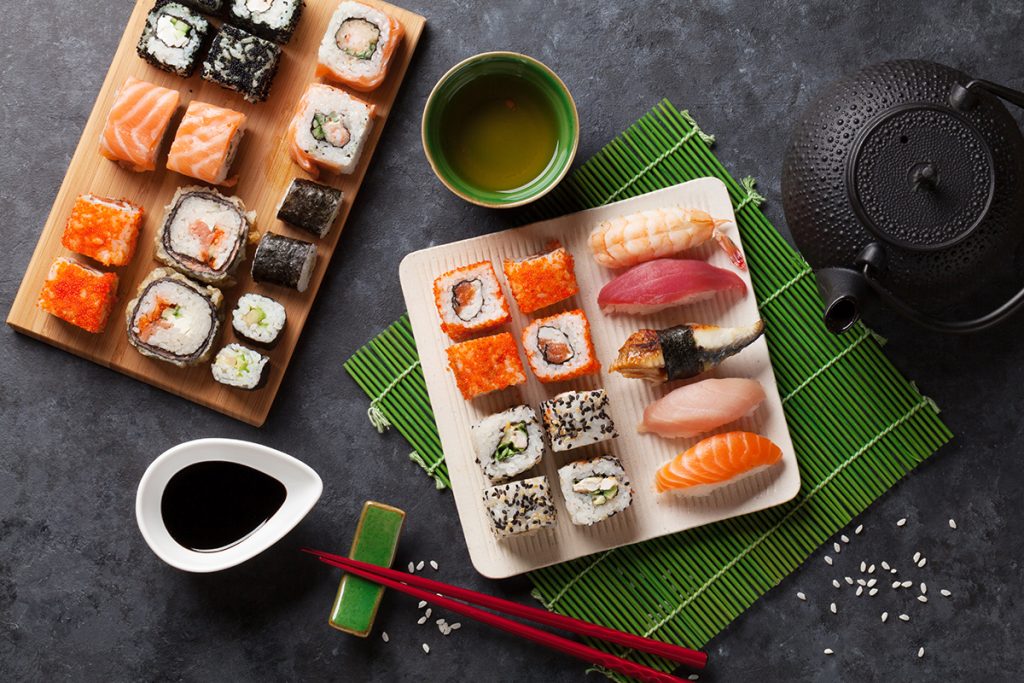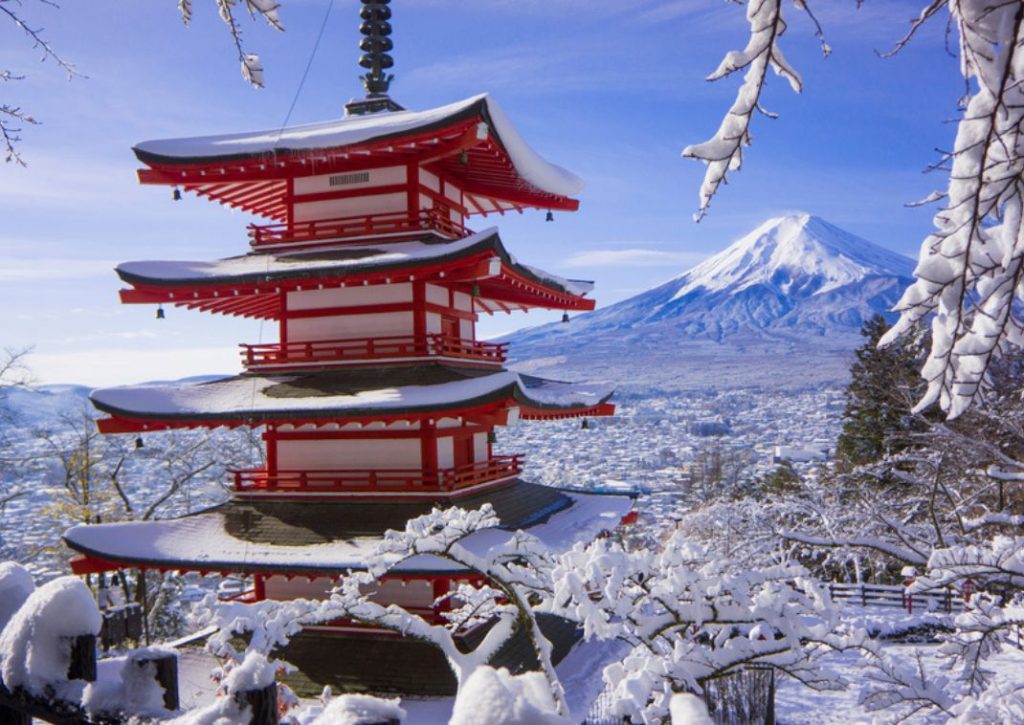An archipelago that combines the ancient with the modern, Japan is a fascinating destination that offers unique experiences for all travelers. From its ancient temples and beautiful natural landscapes to its cutting-edge technology and delicious cuisine, at Asia Charm DMC we help you discover the essence of this country full of contrasts.

Airports
Japan has several international airports that serve as key entry points for travelers. Here are the main ones:
- Narita International Airport (NRT) – Located in Chiba Prefecture, near Tokyo, Narita is one of the main international gateways to Japan.
- Haneda Airport (HND) – Situated closer to central Tokyo, Haneda primarily handles domestic flights but also has a significant number of international flights.
- Kansai International Airport (KIX) – Located in Osaka, Kansai serves the Kansai region, including Kyoto and Kobe, and is a major hub for international travel.
- Chubu Centrair International Airport (NGO) – This airport is near Nagoya and serves the Chubu region. It handles both domestic and international flights.
- New Chitose Airport (CTS) – Located near Sapporo in Hokkaido, this airport caters to international and domestic flights, especially during the winter season.
- Naha Airport (OKA) – The main airport in Okinawa, it offers both international and domestic flights, connecting to various Asian destinations.
- Fukuoka Airport (FUK) – Located in Fukuoka, this airport has a growing number of international flights, particularly to other Asian cities.
These airports are well-equipped with facilities and services for international travelers.

Visa
For tourists planning to visit Japan, the visa requirements can vary based on nationality. Here’s a detailed overview:
Visa-Free Entry:
- Many countries have agreements with Japan that allow their citizens to enter visa-free for short stays (usually up to 90 days). This includes countries like the United States, Canada, Australia, and many European nations.
- If your nationality requires a visa, you will need to apply for a Short-Term Stay Visa. This visa is typically valid for tourism, visiting friends or family, or attending business meetings. The visa usually allows for stays of up to 90 days.
Bank
In Japan, bank working hours can vary slightly between different banks and locations. On weekdays (Monday to Friday): 9:00 AM to 3:00 PM. On Saturdays, some banks are open for a few hours, often from 9:00 AM to 12:00 PM, but many banks are closed on Saturdays. Sundays and Holidays, most banks are closed.
ATM Availability: ATMs are usually available outside regular banking hours and may be found in convenience stores, train stations, and other locations.
Currency

The currency in Japan is the Japanese Yen (abbreviated as JPY) with coins (1, 5, 10, 50, 100, and 500 Yen) & banknotes (denominations of 1,000, 2,000, 5,000, and 10,000 Yen). You can exchange foreign currency for Yen at banks, currency exchange offices, and airports. ATMs also accept international cards. Japan is still a cash-oriented society, so it’s common to pay in cash, especially in smaller shops and restaurants. While credit cards are accepted in many places, it’s good to have cash on hand for smaller establishments
Custom Allowances
When traveling to Japan, there are specific customs allowances regarding items you can bring into the country. Items for personal use, such as clothing and toiletries, are generally allowed without restrictions. However, importing meat, dairy, and other certain food items is restricted.
Be aware of Japanese laws regarding the items you bring, especially if they are restricted or require special permits
Electricity
In Japan, the electrical system has some specific characteristics:
- Voltage: The standard voltage is 100 volts.
- Frequency: There are two different frequencies used:
- 50 Hz in eastern Japan (including Tokyo and Yokohama).
- 60 Hz in western Japan (including Osaka and Kyoto).
Plug Type: Japan uses Type A and Type B plugs, which have two flat parallel pins. Type B plugs also have a grounding pin. If your devices are not compatible with the voltage (e.g., devices designed for 220V), you may need a voltage converter. A plug adapter will be necessary for devices with different plug types
Food

Japanese cuisine is diverse, delicious, and known for its emphasis on fresh ingredients and presentation. Some popular types of food are: sushi, sashimi, ramen, tempura, okonomiyaki, udon, donburi, takoyaki, yakitori, taiyak, mochi, dorayaki, matcha sweets. Each region in Japan has its own specialties.
Japan offers a wide variety of culinary experiences, from street food to fine dining, so there’s always something new to try!
Health & insurance
Before traveling, it’s best to consult with a healthcare provider or travel clinic at least 4-6 weeks prior to your trip for personalized recommendations based on your health status, vaccination history, and travel plans.
While insurance is not mandatory, having a good travel insurance policy can provide peace of mind and financial protection during your trip to Japan.
Hotel options
Japan offers a wide range of accommodation options to suit various budgets and preferences. Some popular types of hotels and specific recommendations: Luxury Hotels, Business Hotels, Traditional Ryokan, Capsule Hotels, Guesthouses and Hostels, Pension and Minpaku.
Internet
Japan has a robust internet infrastructure, making it easy for travelers to stay connected. Prepaid SIM cards are available for tourists at airports, convenience stores, and electronics shops. They offer data plans ranging from a few days to several weeks. Major providers include SoftBank, NTT Docomo. Renting a pocket Wi-Fi device is a popular option. These portable routers can connect multiple devices and provide unlimited data for the duration of your trip.
Many public places, such as airports, train stations, cafes, and restaurants, offer free Wi-Fi. Internet cafés are available in major cities and offer high-speed internet access, computers, and private booths. Download any necessary apps (like the Japan Connected-Free Wi-Fi) before your trip.
Public holidays

Japan has several important public holidays, many of which are rooted in cultural traditions and historical significance. Some of the major Public Holidays in Japan are:
- New Year’s Day (元日, Ganjitsu) – January 1
- The most important holiday in Japan, celebrated with family gatherings, special foods (like osechi), and various traditions.
- Coming of Age Day (成人の日, Seijin no Hi) – Second Monday in January
- Celebrates young people who have reached the age of 20, marking their transition into adulthood.
- National Foundation Day (建国記念の日, Kenkoku Kinen no Hi) – February 11
- Commemorates the founding of the nation and the ascension of Emperor Jimmu.
- Spring Equinox Day (春分の日, Shunbun no Hi) – Around March 20
- A day to celebrate nature and living things, with family visits to graves.
- Showa Day (昭和の日, Showa no Hi) – April 29
- Celebrates the birthday of Emperor Showa (Hirohito) and reflects on the events of the Showa era.
- Constitution Memorial Day (憲法記念日, Kenpo Kinenbi) – May 3
- Celebrates the promulgation of the post-war constitution in 1947.
- Greenery Day (みどりの日, Midori no Hi) – May 4
- A day to appreciate nature and the environment.
- Children’s Day (こどもの日, Kodomo no Hi) – May 5
- Celebrates the health and happiness of children, marked by the display of koinobori (carp streamers).
- Marine Day (海の日, Umi no Hi) – Third Monday in July
- Celebrates the ocean and its importance to Japan.
- Mountain Day (山の日, Yama no Hi) – August 11
- A relatively new holiday (established in 2016) to promote the enjoyment and appreciation of mountains.

Complicated seasons:
Golden Week: Held in late April and early May, it is one of Japan’s most important holiday periods. During this week, many Japanese travel, which can make transportation and accommodations very busy and more expensive.
Cherry Blossom (Sakura): It usually occurs between late March and early April. Although it’s a beautiful sight, it’s also a busy time, with many people traveling to enjoy the views. Reservations must be made in advance to avoid mishaps.

Religion
Religion in Japan is diverse and includes a mix of Shinto, Buddhism, and other belief systems.
- Shinto is the traditional religion of Japan, focusing on kami (spirits or gods) and the worship of nature.
- Buddhism was introduced to Japan from Korea in the 6th century and has since become a major religion.

Many Japanese people practice both Shinto and Buddhism, celebrating life events (like births and weddings) with Shinto rituals and funerals with Buddhist practices.
Other Religions are Christianity or New Religious Movements. Many people in Japan identify as non-religious or cultural practitioners of Shinto and Buddhism, participating in rituals and festivals without deep religious conviction. Overall, religion in Japan reflects a blend of ancient traditions and modern practices, emphasizing community and seasonal celebrations
Timezone
Japan is in the Japan Standard Time (JST) time zone, which is UTC+9. Japan does not observe daylight saving time, so this offset remains constant throughout the year.
Tipping

Tipping in Japan is generally not customary and can even be considered rude in some contexts. Most service charges are included in the price, and good service is expected as a standard. Instead of tipping, showing appreciation through polite behavior, such as saying thank you, is valued.
Exceptions: In some upscale dining establishments, a service charge may be included, but if you receive exceptional service, a small tip might be appreciated. If you choose to leave a tip, do so discreetly by placing it in an envelope rather than handing it directly to the person.
Water
The country has high standards for water quality, and tap water is treated and tested regularly. In most urban areas, it’s clean and potable.
Many people in Japan also drink bottled water, but it’s more for convenience than necessity.
Weather

Japan has four well-defined seasons, each with its own charm. However, the best times to visit are:
- Spring (March to May): This is the season of the famous cherry blossom (sakura), which attracts tourists from all over the world. Temperatures are pleasant, ranging between 10°C and 20°C.
- Autumn (September to November): Another popular time to visit, with spring-like temperatures and a stunning spectacle of autumn leaves (koyo) dyeing the landscapes red and yellow.
- Summer (June to August): Although it’s hot and humid, it offers vibrant festivals and cultural events, but it may be less ideal for those who prefer cooler climates.
- Winter (December to February): This is the perfect time to enjoy the snow in destinations like Hokkaido and experience winter festivals.
Emergency contact numbers
In Japan, the emergency contact numbers are as follows:
- Police: 110
- Fire and Ambulance: 119
These numbers are available for emergencies, and operators can assist in English, although it may take longer to connect.

